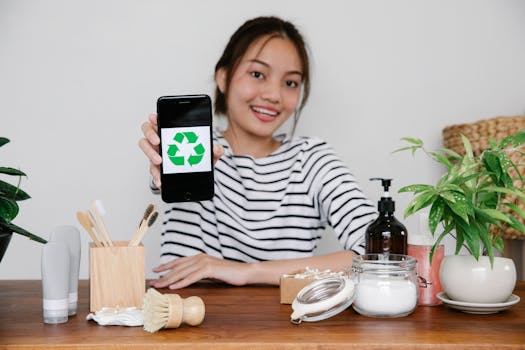Anúncios
In recent years, many users have begun to shift toward minimal and distraction-free digital tools. This evolving trend reflects the desire for clarity, focus, and simplicity in our increasingly cluttered digital lives. As technology becomes more complex, the appeal of clean interfaces and straightforward functionalities has grown tremendously.
Recommended Content

The Rise of Privacy-Focused Social Media
As trust in mainstream social media declines, users seek privacy-focused alternatives that prioritize data safety and genuine community interaction.Clean, focused app experiences are not merely a fad but are becoming essential for productivity and mental well-being. Users are recognizing that designing tools without unnecessary distractions allows for deeper engagement and efficiency. Consequently, both individuals and organizations are embracing minimalist designs across various digital platforms.
The desire for distraction-free environments aligns with a broader movement toward mindfulness and intentional living. In this article, we’ll explore the reasons behind this shift, the benefits of minimal digital tools, and recommendations for integrating them into daily life.
The Rise of Minimalism in Digital Tools
The trend toward minimalism in digital tools has roots in user frustration with overwhelming options and features. As apps packed with functionalities became the norm, many users found them counterproductive. Over time, the desire for simplicity emerged, leading to a search for tools that emphasize basic, core functions.
By prioritizing essential features, developers are catering to users craving a smoother experience. Stripped down interfaces can lead to quicker navigation and less cognitive load. Users appreciate being able to focus without distraction, allowing them to reach their goals faster.
Additionally, minimalist tools often reflect a design philosophy that values the user experience above all else. This approach not only enhances usability but also fosters deeper connections between the user and the tool. As a result, many consumers now consciously choose apps that align with this philosophy.
Consequently, numerous companies—including some tech giants—are adopting minimalism in their digital offerings. This shift is a strategic response to the growing demand for products that simplify rather than complicate users’ lives. Embracing this ethos has the potential to rekindle trust and engagement between users and brands.
Ultimately, the rise of minimalism signifies a collective yearning for clarity and purpose in the digital realm. As users become more discerning, software developers must adapt to meet evolving expectations. With this shift, the future of digital tools seems destined for a cleaner aesthetic.
Benefits of Using Distraction-Free Apps
There are numerous benefits associated with adopting distraction-free apps into daily routines. Foremost among these is improved focus and productivity. When distractions are minimized, individuals can dive deeper into their work.
Additionally, using minimal tools often leads to reduced stress levels. As users navigate tools stripped of unnecessary features, they experience less overwhelm. This ease promotes a sense of control over digital environments.
Furthermore, distraction-free apps can enhance overall satisfaction and enjoyment when working. Users appreciate interfaces that respect their time and attention. This respect translates to positive engagement and a willingness to continue using these tools.
In a world filled with constant notifications and demands, simplicity provides a refuge. As a result, productivity enthusiasts are increasingly gravitating toward tools that prioritize minimalism. This preference often translates into better work-life balance and mental clarity.
Lastly, the benefits of minimal apps extend beyond individual users to teams and organizations. Collaboration becomes more effective when all members use streamlined tools, leading to enhanced workflow and communication. Thus, the principles of minimalism positively impact broader professional landscapes.
Examples of Minimal Digital Tools
As more users seek out distraction-free environments, several minimal digital tools have gained popularity. Notably, applications like Notion and Todoist exemplify how simplicity can coexist with powerful functionality. Their user-friendly designs attract those tired of cluttered interfaces.
Another example is the popular note-taking app, Bear, known for its clean, intuitive user experience. Its minimalistic design philosophy has made it a favorite among writers and students alike. Users rave about the ability to focus on content without visual clutter.
Similarly, minimalist email clients such as Basecamp and Superhuman emphasize speed and efficiency. By prioritizing important features, these tools allow users to manage their correspondence without distraction. Consequently, email has transformed from a cumbersome chore into a streamlined task.
Moreover, specialized apps designed for mindfulness, like Headspace and Calm, offer distraction-free environments that foster relaxation. Users appreciate interfaces devoid of interruptions, allowing them to meditate or reflect more effectively. This trend shows the positive impact of minimalism across different sectors.
Collectively, these examples illustrate a growing ecosystem of minimal tools. Each application encourages users to reclaim their focus while still offering essential functionalities. This burgeoning market reflects a demand for simplicity in the digital landscape.
How to Choose Minimal Tools
When selecting minimal digital tools, several factors come into play. Users should first define their priorities and identify which aspects of their work require focus. Understanding personal goals can help inform tool selection.
Next, evaluating user experience is crucial. Minimal tools should offer clean interfaces without unnecessary features. Take the time to explore different apps to find ones that provide a satisfactory experience without distractions.
Additionally, consider integrations with existing workflows. The best minimalist tools should seamlessly connect with other software being utilized. This compatibility enhances productivity by maintaining efficiency without adding complexity.
Another important element to assess is community and support resources. Opting for tools with robust user communities can provide valuable insights and tips. Moreover, dedicated customer support can facilitate better usage and answer potential queries.
Lastly, users should weigh the long-term value of investments in these tools. Many high-quality apps come with subscription fees, yet they often yield significant returns in productivity and well-being. Dedicate time to understanding what yields the best results.
Overcoming Challenges with Minimal Tools
While minimal tools offer numerous benefits, users may face challenges in their adoption. Transitioning from feature-rich applications can be daunting for many. This sudden change may lead to initial frustration as users adjust to a simplified approach.
Another potential issue is the tendency to overlook essential functionalities. Some may find that their favorite features are unavailable, leading to dissatisfaction. Therefore, a careful selection of minimal tools that still meet users’ core needs is essential.
Moreover, minimal tools often require users to adapt their existing workflows. Reassessing how tasks are accomplished may feel overwhelming initially. However, embracing this change can ultimately lead to improved productivity and satisfaction.
On a positive note, many minimal tools offer guided onboarding experiences that help users familiarize themselves with new interfaces. Participating in tutorials and exploring community forums can also demystify the transition.
Ultimately, successfully implementing minimal tools requires patience and an open mindset. With time, users often realize that the benefits of simplicity outweigh the initial challenges. Embracing this shift can lead to enhanced productivity and engagement.
Future of Minimal Digital Tools
Looking ahead, the future of minimal digital tools appears bright. As users increasingly demand simpler, more focused experiences, developers will continue to innovate in this space. This burgeoning trend opens the door for new applications and methodologies.
The incorporation of artificial intelligence and machine learning into minimal tools is an exciting development. These technologies can streamline user experiences while maintaining a clean interface. As a result, users may enjoy personalized, efficient interactions.
Furthermore, the demand for distraction-free environments may lead to improvements in user mental health. With rising concerns about digital burnout, prioritizing simplicity could have positive societal effects. Minimal tools might help foster healthier relationships with technology.
As remote work and digital collaboration become more prevalent, minimal tools will play a pivotal role. Teams striving for efficiency and focus will increasingly seek out streamlined solutions. This demand can guide future development directions for software companies.
In summary, the future of minimal digital tools holds transformational potential for users and developers alike. As the landscape continues to evolve, the principles of simplicity and focus will guide new innovations, enhancing our digital experiences.
Conclusion
The shift toward minimal, distraction-free digital tools signifies a fundamental change in how we engage with technology. Users increasingly appreciate interfaces that promote focus, clarity, and productivity. By adopting tools that embody these principles, individuals can experience improved efficiency and reduced stress.
As we navigate the evolving digital landscape, it becomes clear that simplicity is not just a design choice but a necessary requirement. Minimal digital tools are not only beneficial but essential for maintaining balance in our work and lives.
Ultimately, as we embrace and advocate for cleaner digital experiences, we help shape a more focused future. Whether at work or play, less can truly be more when it comes to technology.
As this movement continues to evolve, both users and developers have the opportunity to redefine what productivity looks like in the digital age. Let’s champion the minimalist approach and create environments that promote focus and clarity.



